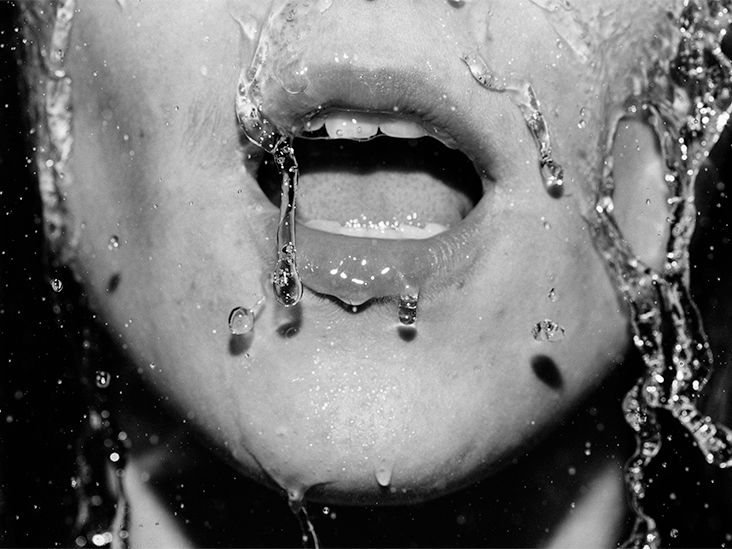Idontknow-
Luminary
- Joined
- Aug 15, 2025
- Posts
- 6,543
- Reputation
- 18,874
Alcohol Consumption
Mild changes like dry skin or facial flushing can occur with alcohol use.
However, long-term or heavy drinking can lead to more serious issues, such as liver disease and persistent skin problems.
Alcohol may also aggravate existing skin conditions.
Frequent drinking raises the risk of developing alcohol use disorder (AUD), an alcohol addiction or misuse. Most long-term skin issues are linked to AUD.
Short-Term Effects
These effects are temporary and usually appear after a day of drinking, even in people without AUD.
Dehydration
Alcohol increases urine output, causing the body to lose water and salts. Dehydration can affect the skin and may lead to:
Alcohol can trigger histamine release, dilating blood vessels and causing redness or inflammation.
People of East Asian descent are more prone to alcohol-related flushing due to a genetic variant that affects alcohol metabolism.
Sleep Disruption
Alcohol may help a person fall asleep faster but can disrupt overall sleep quality, causing frequent awakenings. Even a night or two of poor sleep can temporarily affect the skin, leading to:
Regular alcohol use can turn short-term effects into persistent problems.
Common long-term skin issues from heavy drinking include:
Skin Infections
Alcohol weakens the immune system and reduces nutrient absorption, increasing the risk of infections.
Skin Cancer
Research has shown a link between alcohol consumption and higher skin cancer risk.
Liver Damage
AUD can lead to liver problems, which may cause yellowing of the skin (jaundice) and other changes. Chronic liver disease from alcohol may also result in:
Regular drinking may trigger or worsen several skin conditions, including:
Rosacea
A chronic condition causing redness, irritation, and pimples. Alcohol can worsen symptoms through inflammation and flushing.
Psoriasis
An autoimmune condition that produces thick, scaly patches. Alcohol can increase the risk of developing psoriasis and may interfere with treatment adherence.
Seborrheic Dermatitis
Characterized by greasy, inflamed patches with flakes, it may be linked to higher alcohol intake.
Porphyria Cutanea Tarda (PCT)
Alcohol increases the risk of PCT, which causes painful blisters after sun exposure.
Discoid Eczema
Also called nummular dermatitis, this condition can be associated with AUD.
Preventing and Managing Skin Effects
To minimize short-term skin issues, staying hydrated while drinking is important.
For conditions related to AUD, liver damage, or chronic alcohol use, the most effective strategy is reducing or stopping alcohol. Consulting a doctor, therapist, or support group can help.
Treatment of skin issues often involves addressing both the AUD and any lingering conditions. Options for AUD include:
For those who continue to drink, over-the-counter moisturizers can help relieve symptoms like dry skin
Also my first post.

 www.medicalnewstoday.com
www.medicalnewstoday.com
Mild changes like dry skin or facial flushing can occur with alcohol use.
However, long-term or heavy drinking can lead to more serious issues, such as liver disease and persistent skin problems.
Alcohol may also aggravate existing skin conditions.
Frequent drinking raises the risk of developing alcohol use disorder (AUD), an alcohol addiction or misuse. Most long-term skin issues are linked to AUD.
Short-Term Effects
These effects are temporary and usually appear after a day of drinking, even in people without AUD.
Dehydration
Alcohol increases urine output, causing the body to lose water and salts. Dehydration can affect the skin and may lead to:
- Dry, flaky skin
- Sunken eyes
- Reduced skin elasticity
- Chapped or cracked lips
Alcohol can trigger histamine release, dilating blood vessels and causing redness or inflammation.
People of East Asian descent are more prone to alcohol-related flushing due to a genetic variant that affects alcohol metabolism.
Sleep Disruption
Alcohol may help a person fall asleep faster but can disrupt overall sleep quality, causing frequent awakenings. Even a night or two of poor sleep can temporarily affect the skin, leading to:
- Dark circles under the eyes
- Paler or duller skin
- Fine lines and wrinkles
Regular alcohol use can turn short-term effects into persistent problems.
Common long-term skin issues from heavy drinking include:
Skin Infections
Alcohol weakens the immune system and reduces nutrient absorption, increasing the risk of infections.
Skin Cancer
Research has shown a link between alcohol consumption and higher skin cancer risk.
Liver Damage
AUD can lead to liver problems, which may cause yellowing of the skin (jaundice) and other changes. Chronic liver disease from alcohol may also result in:
- Darkened skin around the eyes
- Visible blood vessels on the face, neck, or chest
- Itchy skin
Regular drinking may trigger or worsen several skin conditions, including:
Rosacea
A chronic condition causing redness, irritation, and pimples. Alcohol can worsen symptoms through inflammation and flushing.
Psoriasis
An autoimmune condition that produces thick, scaly patches. Alcohol can increase the risk of developing psoriasis and may interfere with treatment adherence.
Seborrheic Dermatitis
Characterized by greasy, inflamed patches with flakes, it may be linked to higher alcohol intake.
Porphyria Cutanea Tarda (PCT)
Alcohol increases the risk of PCT, which causes painful blisters after sun exposure.
Discoid Eczema
Also called nummular dermatitis, this condition can be associated with AUD.
Preventing and Managing Skin Effects
To minimize short-term skin issues, staying hydrated while drinking is important.
For conditions related to AUD, liver damage, or chronic alcohol use, the most effective strategy is reducing or stopping alcohol. Consulting a doctor, therapist, or support group can help.
Treatment of skin issues often involves addressing both the AUD and any lingering conditions. Options for AUD include:
- Medication
- Cognitive behavioral therapy
- Detox programs
- Inpatient or outpatient rehabilitation
- Support groups
For those who continue to drink, over-the-counter moisturizers can help relieve symptoms like dry skin
Also my first post.

How does alcohol affect your skin? Long and short-term effects
Drinking alcohol can affect your skin and make skin conditions worse. Find out more about short- and long-term effects, prevention, treatment, and support.
 www.medicalnewstoday.com
www.medicalnewstoday.com

